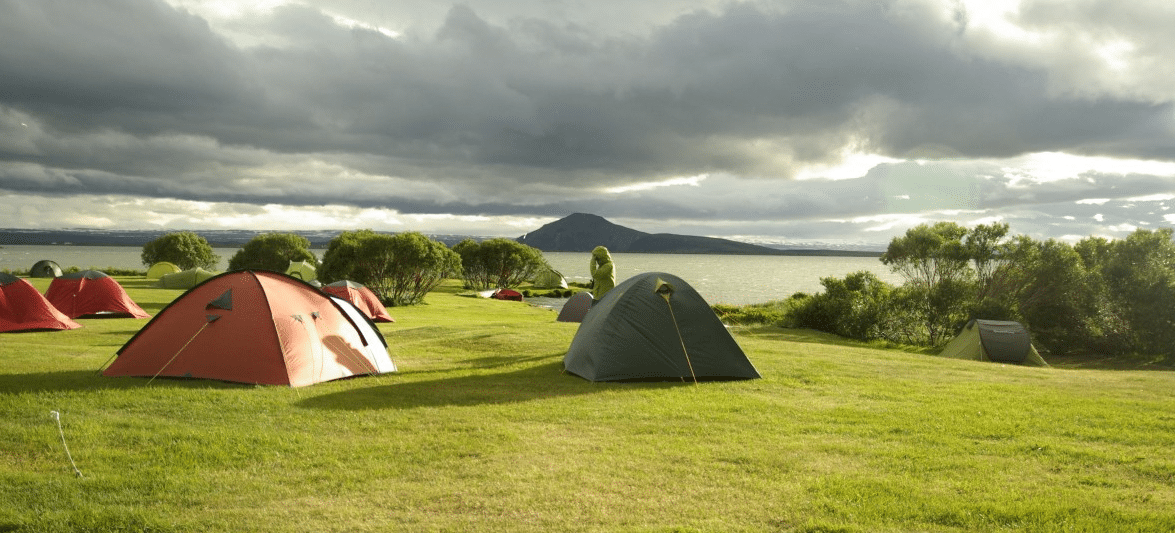If your tent starts to smell, has some mildew or is just generally dirty, then it's time to give it a good cleaning. If you want to have a pleasant stay next time you journey into the woods, you need to learn how to clean a tent the right way. Plus, great tent care is the only way to ensure that your portable home serves you well on many trips into the woods.
This article will share easy, DIY steps for washing and cleaning your tent; definitely not effortless, but next time you go camping and have a cozy tent to snuggle into, you'd be glad you took the trouble.
How To Clean A Tent

- The best way to clean a tent is to do it before breaking camp. Before you start knocking down the tent and packing up for the trip home, take a few moments to clean out the interior to remove any dirt, mud, rocks, sticks, bugs, food or trash. This will go a long way in preventing tears or rips from sharp objects when packing up, and generally make your tent more durable.
- Also, make sure that you empty any storage pockets in your tent.
- Clear away tent stakes, poles and remove shock cords gently to prevent any rough pull that could damage your tent.
- As you fold up the tent, continue to clean off dirt and brush the underside to make sure that sand, grit or rocks do not get folded inside. Once the tent is folded, put keep it in its storage bag or in a cool, dry place. If you have skipped the process of cleaning a tent on the campground, no worries, you can clean out a tent at home. Gently spread it out in an ample space and use a vacuum or a soft bristled brush to sweep out any dirt particles.
We think you'll like: How to Fold a Pop Up Tent - If you notice any torn or ripped area, mend immediately with adhesive material patches that are suitable for your type of tent. Use canvas patches for a canvas tent, nylon patches for a nylon tent and so on. Alternatively, you could stitch over tears and rips with a sewing awl and waxed thread, but patches are the best options for holes especially in mesh netting or window screens.
- Use a damp cloth to wipe up any stains, spills or grime on the tent then air it out to remove any funky smells. Make sure that you do not expose the tent to direct sun rays. Minimizing the exposure to ultraviolet (UV) rays is a crucial element to increase the life of your tent. Over time, UV rays degrade the fabrics in the canopy and rainfly.
- Pack up the tent carefully and store in a storage bag. Most times, it can be hard to fit the tent back into the small carrier bag that it came in. So, you could store it in an old pillowcase, then thread the hem to serve as a drawstring and keep it in a cool, dry, place. Your tent will be as good as new next time you fish it out for a splendid time in the great outdoors.
How To Wash A Tent
Washing your tent is the best way to clean it up. Of course, it might seem like a daunting task when you think about how big and dirty they are. However, it's doable and you can get started with this guide regardless of the size of your tent: the process for cleaning a one person tent or a very large tent is the same.

To wash your tent, you would need :
- Non-detergent soap. Use vegetable soaps or castile soaps, or a mild dishwashing liquid instead. Detergent soaps wear out the waterproofing coat on your tent and expose it to leakage. It is best to just use a tent cleaner.
- Rag or absorbent cloth.
- Soft bristled brush
- Water Hose
- Odor-repellent
- A large tub or sink
- Margarine (optional). It is a simple, effective tree sap remover.
Now, let's get down to it.
- First, use a damp rag and soap to clean any spot stain, mold, mildew or tree sap. Studies have shown that margarine removes tree sap like magic. To get the desired effect, rub a little over the sap, leave for a few minutes and wipe off with a cloth. You can clean mildew or mold off a tent with a solution of ¼ cup of white wine vinegar and 1 cup of water. Mix the ingredients inside an empty spray bottle and shake it thoroughly. Spray your cleaning solution onto any mold or mildew-infested areas and allow it to sit for several minutes. Then you can wipe off the growth with a damp cloth or rag.
- Fill the tub with cool to lukewarm water and add your tent cleaner product. If your tent has mildew, mold or foul odors, use an enzyme cleaner, such as MiraZyme™. Read the instructions on the bottle to know how much to use.
- Unzip the doors of your tent and turn it inside out. If your tent zipper is not running smoothly, use an old toothbrush to remove sand particles and residue that could be obstructing the zip.
- Soak the tent on the tub and let it soak. Again, follow the directions on your tent cleaner bottle to know how long it should soak. Canvas tents take longer to wash because they are not water-resistant like nylon or polyester tents.
- Rinse repeatedly until you're sure that the tent is completely clean of the cleaner product.
- Set your tent up in a cool place to dry. You might have to turn it intermittently to make sure that all the sides are completely dry. If you pack up a wet or even slightly damp tent, it will develop molds and you'd have to do this all over again.
All the processes involved in washing a tent will not take you more than 45 minutes, give or take. Washing a bigger tent, like a 10x20 pop-up canopy tent, might take a little more time and patience to keep it a beautiful focal point as well as a convenient shade. If you're considering getting a tent for your outdoor parties, it can be cleaned just as easily.
If you're wondering, ‘why can't I just throw the tent into a washing machine and save myself the trouble?’. Well, you'd be damaging your tent possibly beyond repair. A washer, especially a top-loader with an agitator, can stretch or tear fabric, mesh and seams. Dryers can do the same, and can generate enough heat to do damage as well.
We think you'll like: How to Patch a Tent | Fixing Screen and Mesh Tips

More Ways To Care For Your Tent
Waterproofing Tent Seams and Coatings.
If you notice that the waterproof coating on your tent is wearing out, now would be an excellent time to reinforce it. Re-waterproofing a tent or rainfly is an easy way to extend the life of your tent. Most tent-sealing products need 24 hours to dry out completely, so make sure you have an ample space free of debris where the tent can be spread out to dry.
Reseal leaky seams.
Most tents are sold with already sealed seams, usually with seam tape. However, seams are vulnerable areas, because they are points of direct pressure, so you need to inspect them periodically for damage. If the seam tape fails, gently remove the strips of tape that are peeling off. The tape leaves a sticky residue on the inside of the seam, so apply new seam sealer to the outside of the fabric. You can also fix tiny holes in the main tent fabric with seam sealer.
Storing your tent
Make sure your tent is dry before storing it. No tent-care rule is more important than this simple fact. Damp fabrics grow mildew, giving tents a funny smell and harming polyurethane waterproof coatings. Over time, moisture also starts to break down coatings chemically. A neglected tent then becomes flaky, tacky or smelly and is a sure candidate for serious intervention or replacement.
After drying out your tent completely, you need to store it away in a place where it cannot get dirty or damp. If you cannot get it to fit into the storage bag, fold it neatly into an old pillowcase and then thread the hem to serve as a drawstring that you can tie shut. Keep the container in a cool, dry place.
Take care of your tent; it will return the favor next time you're in the woods.
